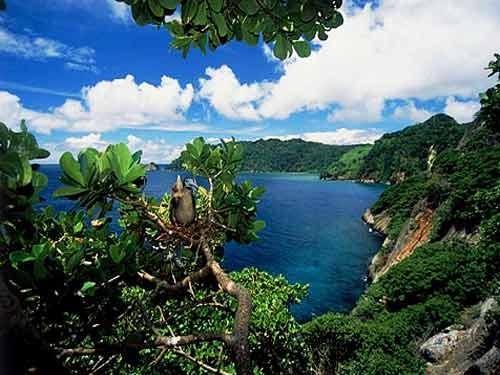Guanacaste, Guanacaste, Costa Rica
Suggest Place to Visit
435
Track to location with GPS |
 |
IMPORTANCE
It contains a great ecological diversity distributed in the forests: very humid tropical, humid tropical, cloudy and dry tropical. The higher parts of the park are represented by the massifs of the Orosí and Cacao volcanoes. The park includes about 200 km2 with signs of volcanic craters; the ancient craters of Orosí and Cacao are the most prominent. It is also important to mention that between the Orosito hill and the Cacao Volcano, rivers such as the Ahogados and the Colorado are born which, later, together with other rivers, will form the Tempisque River, the main collector of Guanacaste.
The park preserves the largest herd of wild pigs (Tayassu pecari) in the Guanacaste Conservation Area. In itself it constitutes an altitude biological corridor that allows the seasonal migration of a large number of species such as some insects, birds and mammals; that go down to Santa Rosa, during the dry period and ascend to the higher parts, Orosí Volcano and Cacao.
In the province of Guanacaste, North Pacific, 36 km north of the city of Liberia. It is made up of three sectors: Maritza Sector, Pitilla Sector and Cacao Sector, here the biological stations for scientific and related groups are located. Access is by four-wheel drive vehicle and the respective reservations must be made.
ATTRACTIVE
Maritza Sector: Type of forest transition from dry forest to humid forest, aquatic insects, bird watching, water sources, streams and streams.
Pitilla Sector: The rain forest, bird watching, observation of Lake Nicaragua.
Cacao Sector: Dry - humid transition forest, lower cloud forest, top of the volcano (permission is required to climb to the top), bird watching, El Pedregal viewpoint.
FLORA AND FAUNA
Due to its extension, climatic diversity and location, both on the Atlantic and Pacific slopes, the park has great biological diversity in its evergreen humid forest. The forest on the tops of the Orosí and Cacao volcanoes is primary, epiphytic plants such as bromeliads and orchids stand out, there are ferns, araceae and mosses. In this park there are around 3,000 species of plants. The dominant species are the maría, the tempisque, the cork oak, the capulín, the jícaro danto and the golden fruit. The diversity of birds stands out, there are around 300, among them the turkey, the goldfinch, the Montezuma oriole, the toucan, the king of buzzards, the oropopo or spectacled owl, the bell bird, the umbrella bird, the magpie and the bone loader, among others. Some of the most representative mammals are the tepezcuinte, the deer, the jaguar, the cariblanco, the puma, the tapir, the pizote, the frog, the armadillo, the tolomuco and the two-toed sloth. According to estimates of the number of diurnal and nocturnal butterfly species, there are about 5,000 species.
Comments
We don´t have yet any comments about:
Guanacaste National Park
Guanacaste National Park
Be the first to leave a comment as it is very important to inform other people
Outros locais a visitar
Within a radius of 20 km from:Guanacaste National Park
Orosí Volcano |
| 12,4 Km |
 |
Hotel reservation near Guanacaste National Park within a radius of 20 km
Why to book with ROTAS TURISTICAS
The best prices
Our partnerships with the world´s largest operators offer research on the best market prices.
More options
At Rotas Turisticos you can book the hotel, buy the air ticket, book the transfer from the airport to the hotel and vice versa, book the local excursions, rent the car, take travel insurance and consult the places to visit and where to go.
Holiday Tips & Destinations
Hundreds of holiday destinations with all the options that allow you to easily choose the destination that best suits your dream vacation.
ROTAS TURISTICAS
Links






